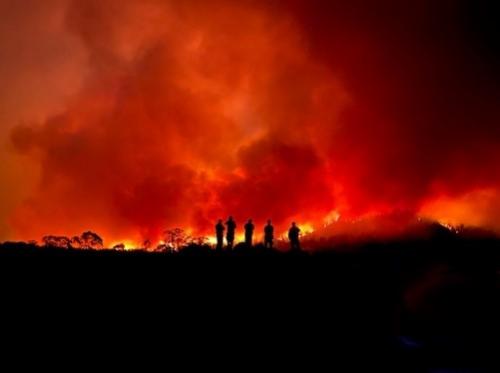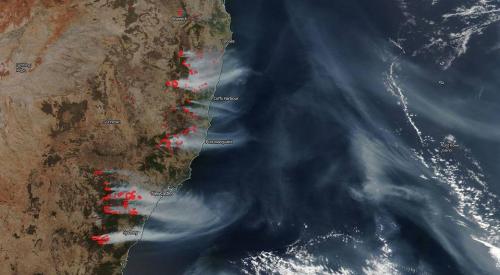Radiative forcing by aerosols
Aerosols play an important role in climate. These thin atmospheric particles are able to scatter or to absorb light, affecting the atmospheric temperature by the so-called radiative forcing (conversion of light energy into heat). The nature of this forcing (absorption or scattering) and its intensity depends on the type, size, and number density of the aerosol particles.
Aerosols in the stratosphere
In the middle atmosphere (~10 to 50 km height), the main aerosol source comes from large explosive volcanic eruptions that send large quantities of sulfur gases into the stratosphere. These gases combine with water and are gradually converted to sulfate droplets able to reside for a long time at these altitudes.
An actor playing a growing role: the carbonaceous aerosols
With climate change, another aerosol type takes a growing role in the stratosphere: soot emitted during large wildfires favoured by extreme drought events. Some of the most extreme recent wildfires (such as the Australian fires in the austral summer 2019-2020) appeared to have an impact similar to that of volcanic eruptions of medium intensity!
Ever-improving aerosol data in the service of the scientific community
Light scattering and/or absorption by aerosols is observed by many different instruments, including satellites providing global observations. The challenge consists in separating the respective contributions of all atmospheric components and to extract the specific aerosol contribution. This information is used to set up long time series showing the changing impact of aerosols (through scattering for volcanic aerosols, and absorption for soot from wildfires) and their relative contributions in a warming climate.
BIRA-IASB has a long-lasting expertise in aerosol characterization of stratospheric aerosols and contributed to this effort based on different satellite experiences over several decades. One of them is the pioneering Global Ozone Monitoring by Occultation of Stars (GOMOS) experiment that was onboard Envisat and measured between 2002 and 2012, a key-period of growing volcanic activity coupled with the development of climate change.
In spite its age, this challenging collection of measurements continues to provide a wealth of information of high interest for atmospheric studies. The continuous improvement of the aerosol data provided by GOMOS and its delivery to the data repository of the Copernicus Climate Change Service remains a challenge that BIRA-IASB is taking up in the service of the scientific community.


